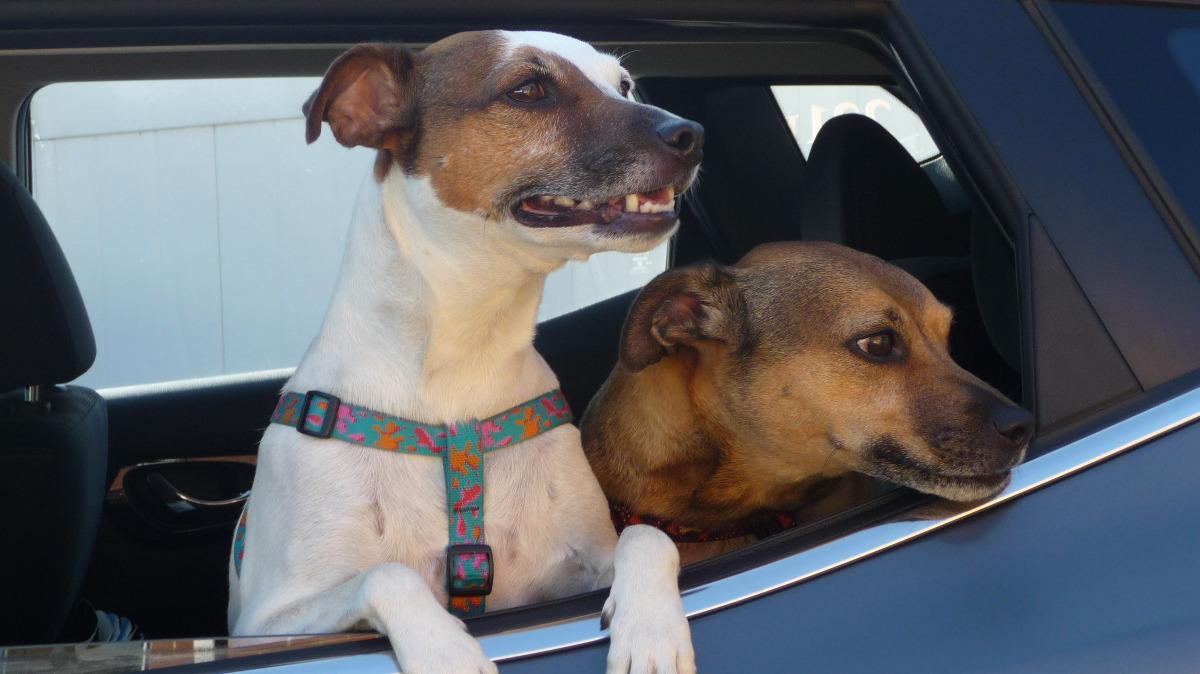Safety Tips for Traveling with Pets

- posted: Apr. 24, 2022
Safety Tips for Traveling with Pets
With travel restrictions lifted and warmer weather on the horizon, many of us are starting to travel again. While many people leave their pets at home with trusted pet sitters or in a boarding facility, sometimes a move or extended trip makes taking a pet along for the ride a necessity. Let’s learn how to make travel with your favorite fur baby as safe as possible whether by car or plane.
While many dogs enjoy riding in the car or RV, cats are often less enthusiastic and some pets are anxious or become carsick. Tips for keeping pets comfortable during auto travel include:
- Keep pets confined: use a seatbelt or other restraint device or a crate to keep cats and dogs safe. Loose pets in a car can be dangerous. Also, NEVER transport pets in the back of an open pickup truck where they can jump or fall out of the back of the truck and become seriously injured. It’s not worth the risk.
- Keep pets in the back seat whenever possible to avoid airbag injuries and distractions.
- Stop frequently to allow bathroom and water breaks. Make sure pets are wearing proper ID tags and collars and that dogs stay on a leash.
- Don’t leave your pet alone in the car, especially during warm weather. Travel with another person when possible. If you must travel alone with your pet and need to use the rest room, park in the shade and place a sunscreen across the windshield. Consider using a cooling mat and/or portable fan to keep pets cool. Consider keeping the car running with the air conditioner on (or heater in extremely cold weather) with an extra key or remote starter. ALWAYS set the parking brake and use child locks if leaving your pet alone in a running vehicle.
- If your pet gets anxious or gets sick in the car, feed a very small meal or don’t feed your pet prior to traveling and consider using an over the counter or prescription medication to reduce motion sickness, especially for longer trips. Supplements or drugs for anxiety may also help ease stress during a car ride. Ask your vet for the best options for medications for your pet. Keep some old towels or pee pads
Air travel can pose additional challenges when pets are accompanying you on a trip. Tips for safe air travel include:
- If at all possible, travel with your pet in the main cabin. Small dogs and cats have the advantage here as pets in the cabin must fit under the seat in their carriers. If your pet must go in the cargo hold, make sure the crate is regulation and that your pet is secure. Most airlines that fly pets have temperature-controlled cargo areas, but it never hurts to ask what the accommodations are like or what the procedure for handling pets is for a particular airline.
- Sedatives can be a mixed bag. If your pet truly panics and you must take her with you, a mild sedative may make the trip easier. But there can be risks such as low blood pressure, changes in breathing or other undesirable effects, especially in short-nosed breeds like bulldogs. It is also recommended to not feed your pet or feed only a light meal prior to take off.
When booking a flight with your pet, try to book early and inform the airline that you are flying with your pet. A direct or non-stop flight is also preferred whenever possible. Be sure to check airline pet safety records and policies. Take all necessary vaccine records, pertinent health records, health certificates and a photo of your pet and keep duplicates in your carry on as well as attached to your pet’s crate, especially if he is traveling in cargo. Pet carriers should also be marked as containing live animals with a prominent sticker. Make sure to pack enough of any medications your pet takes for the duration of the trip.
Specific criteria must often be met weeks to months in advance of traveling outside the United States, so do your research early if you must travel to another country with your pet.
Finally, it may be a good idea to find a 24 hour emergency veterinary clinic at your destination and store the phone number and address in your phone in case there is a problem with your pet on arrival or anytime during your trip.
Traveling with a pet can be stressful and, if other arrangements can be made, it may be best to travel without your pet. But, if your pet must accompany you, these steps should limit things going wrong on your trip.
This blog brought to you by the Patton Veterinary Hospital serving Red Lion, York and the surrounding communities.
Source: http://veterinarynews.dvm360.com/client-handout-preflight-checklist-air-travel-with-pets
https://www.gopetfriendly.com/blog/tips-traveling-alone-pet-dog-cat/
https://www.humanesociety.org/resources/travel-safely-your-pet-car-airplane-ship-or-train
Location
Patton Veterinary Hospital
425 E Broadway
Red Lion, PA 17356
